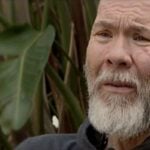In February 2025, nearly 9 million Americans held multiple jobs. What’s more surprising? Many of these moonlighters aren’t just scraping by — they have college degrees and stable careers.
A new report from the Federal Reserve Bank of St. Louis highlights this striking shift, revealing that even educated professionals now juggle multiple gigs just to keep pace financially.
Don’t miss
- I’m 49 years old and have nothing saved for retirement — what should I do? Don’t panic. Here are 5 of the easiest ways you can catch up (and fast)
- Gain potential quarterly income through this $1B private real estate fund — even if you’re not a millionaire. Here’s how to get started with as little as $10
- You’re probably already overpaying for this 1 ‘must-have’ expense — and thanks to Trump’s tariffs, your monthly bill could soar even higher. Here’s how 2 minutes can protect your wallet right now
The Fed also notes an interesting dilemma in the data: Moonlighting workers contribute to the tight labor market by working more total hours across different jobs.
Because these over-employed individuals are already the gaps in the workforce, their extra hours may reduce opportunities for unemployed people seeking traditional full-time positions.
“Overemployed workers demonstrate a clear willingness to trade higher hourly wages for increased total earnings,” the report states. ”By working significantly more hours, they effectively increase their annual compensation. This behavior might be attributed to a desire to keep pace with recent inflation, as individuals actively seek ways to supplement their income and counteract the erosion of purchasing power.”
Gone are the days when multiple-job holders were primarily low-wage earners trying to make ends meet. Today, even those with diplomas proudly hanging on their walls are pulling double duty. But what’s driving educated Americans to hustle harder than ever?
The economic squeeze
First, let’s talk inflation. It’s relentless and unforgiving, with prices for groceries and other everyday items remaining high. For many younger workers, student loan debt is a significant burden on their cash flow. As of March 202, about 4 million borrowers were behind on their student loan payments, making a substantial increase in delinquency rates since the resumption of payments after the pandemic pause.
But economics isn’t the only factor behind the trend.
A cultural shift in how Americans perceive work also plays a significant role. Millennials and Gen Z, in particular, are more accepting of multiple income streams as a strategy for achieving financial independence and career flexibility.
For them, holding several jobs can be as much about autonomy, skills diversification and creating financial resilience as much as simple survival.
The pandemic accelerated this shift dramatically, normalizing remote and hybrid work arrangements. Digital platforms like Fiverr, Uber, and Upwork have made securing supplemental income opportunities easier than ever.
Now, educated professionals effortlessly toggle between primary jobs and side hustles, exploiting digital tools and remote work to maximize their earning potential.
Read more: Want an extra $1,300,000 when you retire? Dave Ramsey says this 7-step plan ‘works every single time’ to kill debt, get rich in America — and that ‘anyone’ can do it
The dark side of moonlighting
Despite the benefits, working multiple comes at a cost. The harsh reality? Chronic stress, burnout and diminished work-life balance. Constantly juggling competing priorities, deadlines and employer expectations is an exhausting endeavor, placing workers at risk for mental and physical health issues.
Financially, the juggling act can also get messy. Multiple income streams complicate tax filing and financial planning, requiring careful tracking and strategic management. Without proper oversight, extra earnings could be swallowed by taxes and financial inefficiencies.
Then there’s the lack of labor protections. Many side gigs don’t offer essential worker benefits such as health insurance, retirement contributions or paid leave, leaving educated workers exposed and vulnerable. If economic conditions worsen or personal crises arise, these workers could face rough financial setbacks.
Will the trend become permanent?
Experts increasingly believe that multi-job holding, especially among educated workers, is shifting from a temporary trend to the new norm. With ongoing economic volatility, student debt, inflation and changing workforce expectations, this pattern seems likely to stick around.
So, what does this mean for the future?
Employers may have to adapt quickly. To retain top talent, they’ll need to offer more flexibility, competitive compensation and incentives that acknowledge their employees’ changing economic realities.
“Lifetime employment at a single job is largely a thing of the past,” entrepreneurship expert Caroline Castrillon recently wrote in a recent Forbes article examining the rise of non-linear career paths. “While some employers may frown upon non-linear careers, those attitudes are quickly changing.”
The bottom line is clear: Even a college degree no longer guarantees financial security. As educated Americans hustle harder than ever, the very structure of the workforce is transforming. Multi-job holding isn’t just about extra pocket money anymore — it’s rapidly becoming essential for survival in today’s unpredictable economy.
What to read next
- Millions of Americans now sit on a stunning $35 trillion in home equity — here’s 1 new way to invest in responsible US homeowners while targeting a 14%-17% IRR
- Robert Kiyosaki warns of a ‘Greater Depression’ coming to the US — with millions of Americans going poor. But he says these 2 ‘easy-money’ assets will bring in ‘great wealth’. How to get in now
- Here are 5 ‘must have’ items that Americans (almost) always overpay for — and very quickly regret. How many are hurting you?
This article provides information only and should not be construed as advice. It is provided without warranty of any kind.









